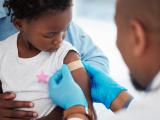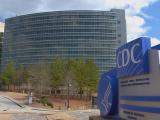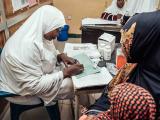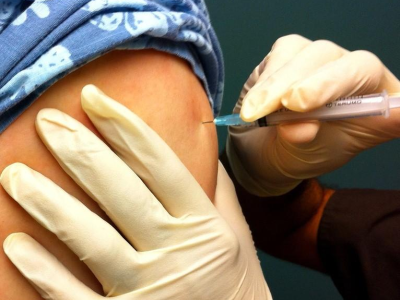Sep 18, 2008 (CIDRAP News) The US Centers for Disease Control and Prevention (CDC) today released a report detailing the first year of its public health "do not board" (DNB) list, a new tool designed to prohibit those with serious communicable diseases from flying into or out of the country.
Data from the first year of the program, from June 2008 to May 2008, appear today in the Sep 19 issue of Morbidity and Mortality Weekly Report (MMWR).
"State and local health departments in the United States and other countries should be aware of this new public health tool," the CDC said in the report, adding that the list is designed to provide a backup measure when local public health efforts aren't strong enough to keep certain people who are contagious from boarding commercial flights.
The CDC said it developed the DNB list in June 2007. The list is managed by the CDC and the US Department of Homeland Security (DHS), though it said the DHS defers public health decisions and actions to the CDC.
Shoring up air travel restrictions
Three months after the CDC developed the DNB list, majority members of the US House Committee on Homeland Security released a report that criticized how US health officials handled the case of Andrew Speaker, a man with drug-resistant tuberculosis (TB) who caused an international health scare in May 2007 when he traveled overseas despite warnings from health officials.
Speaker was traveling internationally when he was thought to have extensively drug-resistant TB (XDR TB). He was later found to have multidrug-resistant (MDR) TB. The committee said the delay was a violation of International Health Regulations.
Among its findings, the committee said federal officials failed to take early, aggressive action to prevent Speaker from traveling and that it took several hours for the DHS to place Speaker on Transportation Security Administration's "no fly" list because of confusion over the fact that the man wasn't considered a terrorism threat.
After the House committee issued its report, the CDC said it was clear that the incident provided useful lessons, and though the agency was in the process of reviewing its own performance, it had already taken steps to prevent future problems.
How the list works
According to the provisions of the DNB list, state and local health officials must contact their local CDC quarantine station to place a person on the DNB list. Then the CDC determines if the person is
- likely contagious with a communicable disease that presents a serious public health threat
- unaware of or likely to not comply with public health recommendations and medical treatment
- likely to try boarding a commercial aircraft
The CDC said it has several criteria for deciding when to add or remove people from the DNB list. More stringent rules are in place for patients who have suspected or confirmed MDR TB.
Once public health officials determine a patient is noncontagious, the CDC and DHS remove the person from the list, usually within 24 hours. The CDC also said it reviews the list each month to determine if anyone on the list is eligible for removal.
First-year tally
According to the MMWR report, the CDC received 42 requests to add persons to the DNB list, all of whom had suspected or confirmed pulmonary TB. The agency approved 33 (79%) of the requests.
Of the 9 people who weren't added to the list, 4 were subject to other local public health actions such as isolation orders, 3 agreed not to fly, and 2 were determined to be noncontagious.
Of the 33 people who were added to the list, 28 were placed by public health departments in the United States. Fourteen of the 33 were placed on the list while they were outside of the country.
Drug susceptibility test results were known from 27 of the people on the list, 19 of whom were susceptible to first-line antibiotics used for treating TB. Among the others, 7 had MDR TB and 1 had XDR TB. Fifteen of the people on the list were citizens of what the WHO designated as TB high-burden countries.
Two of the 33 people who were placed on the DNB list attempted to evade the air travel restriction, and both were detained by border officials and were taken to local hospitals for evaluation and treatment of TB.
When to use the tool
In an editorial note that accompanied the report, the CDC said judicious use of the DNB list could help avoid the human and economic burdens of contact investigations that result when people with communicable diseases fly.
The CDC also pointed out another tool that can be used to restrict travel across borders. The CDC, with DHS Customs and Border Protection, can issue a border lookout that can prevent a person with a communicable disease from entering the country by sea, air, or land. "Backup measures such as border lookout records are important adjuncts to the public health DNB list," the authors wrote.
The list is not limited to the communicable diseases that are covered under quarantine and isolation laws, the CDC noted, though it has so far been used only in instances when people have suspected or confirmed TB.
CDC. Federal air travel restrictions for public health purposesUnited States, June 2007-May 2008. MMWR 2008 Sep 19;57(37):1009-12 [Full text]
See also:
Sep 13, 2007, CIDRAP News story "House panel sees CDC errors in case of traveling TB patient"
















